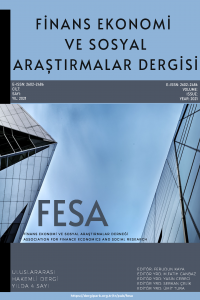MOLDOVA CUMHURİYETİ ULUSAL BANKASI`NIN ULUSAL EKONOMİNİN GELİŞMESİ AMACINA YÖNELİK PARA POLİTİKASINI İLERLETME YÖNERGELERİ
Merkez Bankası` nın para politikası, ülkenin ekonomi politikasındaki genel hedeflere ulaşmak için enflasyonu en uygun seviyede koruyup piyasa fiyatlarının sabitliğini garantiye alarak, ülkenin gelişimi ve kalkınması için ekonomik faaliyetleri canlandırıp işe alımlar sağlayarak tedavüldeki para akışını, faiz oranlarının seviyelerini, döviz kuru oranlarını ve diğer ekonomik parasal göstergeleri etkisi altına almaktadır.
Enflasyonun Dünya ekonomisindeki belirsizlik özelliği ve Moldova Cumhuriyeti ekonomisindeki yüksek açılış derecesi teminat ve fiyat tutarlılıklarında tehlike yaratan çeşitli büyük riskler olduğunu göstermektedir. Orta vadede bu durumlar yiyecek ve enerji kaynaklarının fiyatlarında, büyük miktardaki dövizlerin kur oranlarında, sermaye akışında geniş oranda dalgalanmalar yaratmaktadır. Bütün bu şartların üstesinden gelmek için para politikasına önemli bir mücadele göstergesi olarak Ulusal Moldova Bankası tarafından desteklenen ise uygun bir şekilde enflasyonun hedef sınırında devam eden enflasyona dair beklentileri belli bir düzeyde korumaktır.
Anahtar Kelimeler:
Merkez Bankası, Eflasyon hedefi, Faiz oranı, Para politikası
IMPROVEMENT DIRECTIONS OF THE MONETARY POLICY OF THE NATIONAL BANK OF THE REPUBLIC OF MOLDOVA WITH THE PURPOSE OF DEVELOPMENT OF THE NATIONAL ECONOMY
The monetary policy of the central bank influences the amount of currency in circulation, the level of interest rates, foreign exchange rates and other economic-monetary indicators in order to achieve the general objectives of the economic policy, such as ensuring price stability by maintaining the inflation at an optimal level, the growth and the economic development of the country by stimulating economic activity, employment, etc.
The uncertain nature of the evolution of the world economy and the high degree of openness of the economy of the Republic of Moldova denotes a multitude of major risks that endanger the assurance and maintenance of the price stability. In the medium term, these remain to be large fluctuations in prices for food and energy resources, fluctuations in exchange rates of major currencies and of the capital flows. To cope with these situations, an important challenge for the monetary policy promoted by the NBM is to maintain inflationary expectations well anchored within the inflation target range.
Keywords:
Central bank, Inflation targeting, Interest rates,
___
- BERNANKE, B. (2007). Globalization and monetary policy Fourth Economic Summit, Stanford Institute for Economic Policy Research, Stanford, California, 2 March 2007. https://www.bis.org/review/r070306a.pdf
- BLANCHARD, O., DELL’ARICCIA, G., MAURO, P. (2010). Rethinking Macroeconomic Policy. IMF Staff Position Note, SPN/10/03, February 12, 2010. ttps://www.imf.org/external/pubs/ft/spn/2010/spn1003.pdf.
- FRIEDMAN, M. (1968). The Role of Monetary Policy. The American Economic Review, Vol. 58, No. 1 (Mar., 1968), 1-17. https://itech.fgcu.edu/faculty/bhobbs/Milton%20Friedman%20The%20Role%20of%20 Monetary %20Policy.pdf.
- LAROSIÈRE, J. (2010). Towards a New Framework for Monetary Policy. Central Banking, vol. 20, nr. 3, 2010. https://www.robert-schuman.eu/en/doc/ouvrages/plus/rs-2011-jdl-en.pdf.
- ROUBINI, N. (2006). Why Central Banks Should Burst Bubbles. International Finance 9:1, 2006, 87–107 http://www.kailchan.ca/wp-content/uploads/2011/05/Bubbles-and-Monetary-Policy-Roubini-2006.pdf.
- NATIONAL BANK of MOLDOVA. The objectives of monetary policy of the NBM. https://www.bnm.md/ro/content/obiectivele-politicii-monetare
- NATIONAL BANK of MOLDOVA. The monetary policy instruments of the NBM. https://www.bnm.md/ro/content/valorile-principalelor-instrumente-de-politica-monetara
- NATIONAL BUREAU OF STATİSTİCS. Statistical databank. https://statbank.statistica.md/PxWeb/pxweb/en/.
- Yayın Aralığı: Yılda 4 Sayı
- Başlangıç: 2016
- Yayıncı: Ferudun KAYA
Sayıdaki Diğer Makaleler
“SU”YA FİNANSAL VE MAKROEKONOMİK BİR BAKIŞ: FİLİSTİN ÖRNEĞİ
Wisam Adnan SAMARAH, Merve TUNCAY
DU-PONT ANALİZİ VE ÖRNEK BİR UYGULAMA
Risk-Getiri İlişkisinin Analizi: Türkiye Örneği
Kalkınma Literatüründen Hareketle Enerji-Büyüme İlişkisi
Ayşem TİMUR, Nihal KARTALTEPE BEHRAM
GAYRİMENKUL DEĞERLEMESİNDE ÇOK BOYUTLU YAKLAŞIMLAR
AVRUPA PİYASALARINDA DOĞAL GAZ FİYATININ PETROL FİYATI İLE İLİŞKİSİ – SINIR TESTİ YAKLAŞIMI
